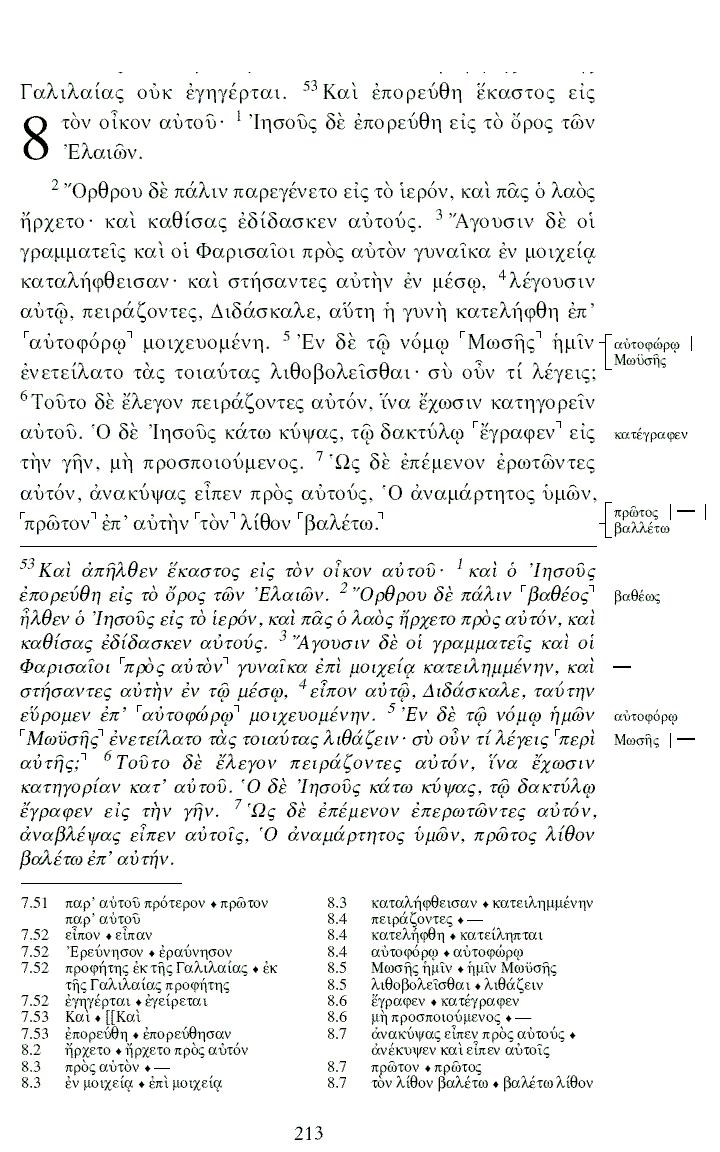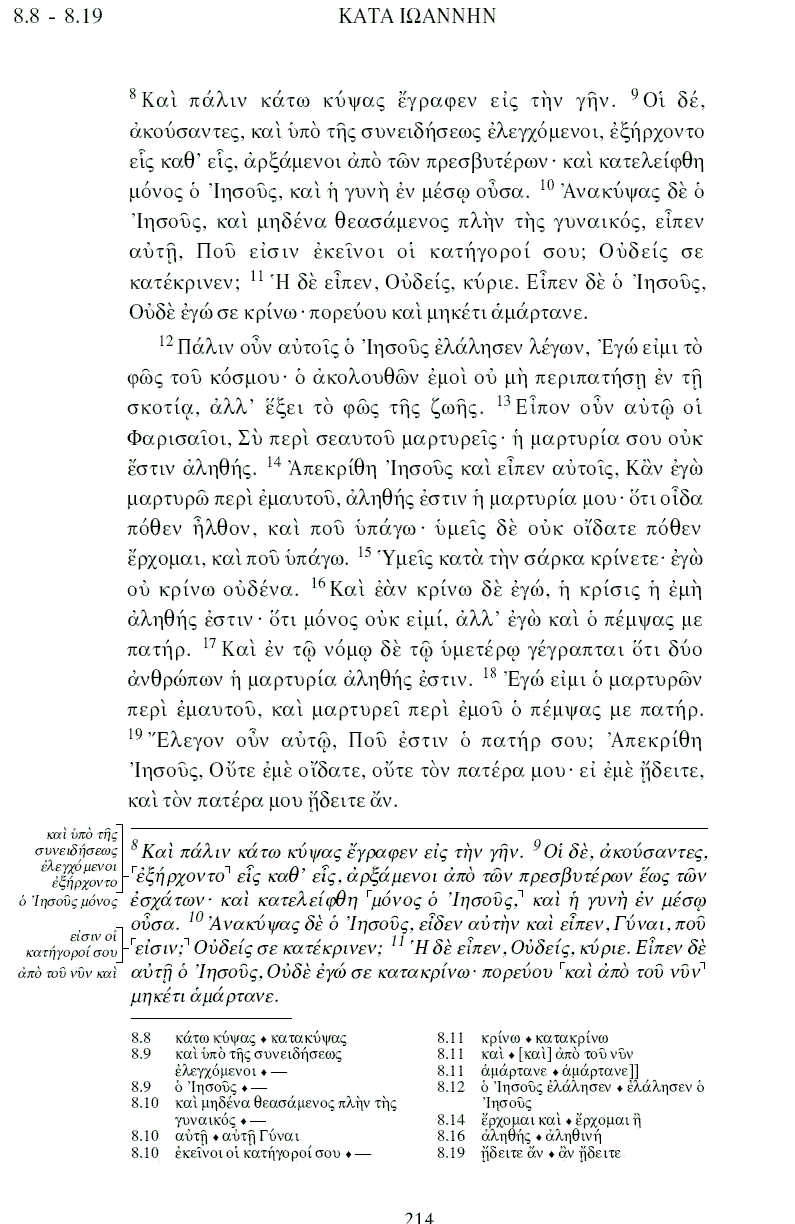From Preface, pg xi,xii
The Pericope Adulterae
The narrative regarding the woman accused of adultery is clearly
a canonical component within the Byzantine Textform. Yet this
particular twelve-verse passage reflects a complex transmissional
history, perhaps caused by its exclusion from standard lectionary use
within the Greek church in relation to the portion of text selected for
reading at the feast of Pentecost. 18 Von Soden identified seven distinct
lines of transmission within this short section of text. Robinson's
complete collation of all available manuscripts containing this
pericope suggests that von Soden may have underestimated the
complexity of its transmissional lines. Nevertheless, Von Soden's
three primary lines of transmission remain valid, and encompass the
bulk of the manuscript tradition. Each of these three lines - termed by
von Soden μ5,
μ6, and μ7
- retains a near-equal level of support. 19
The μ7 group exists primarily among manuscripts of the 12th and
subsequent centuries. This group is recognized by von Soden and
other researchers as possessing a late recensional text that corresponds
to the Kr group found in other portions of the New Testament. The μ5
and μ6 transmissional lines dominate the remaining portion of the
Byzantine manuscript tradition, and reflect earlier forms that were
diverse and widespread within that tradition. The autograph form of
the Pericope Adulterae is more likely to have been one of these two
transmissional lines, as opposed to that found in the recensional μ7 =
Kr tradition.
Previously, the editors displayed the text of the Pericope
Adulterae as a tentative hybrid, combining elements of μ5 and μ6, with
some readings bracketed. In this edition, the primary text is μ5, with
its marginal alternates in their proper location. The μ6 text is displayed
separately as an italicized footnote, along with its own alternate
marginal readings. For this pericope the μ5 and μ6 texts no longer are
dependent on von Soden's reconstructions, but each text is published
as a group-based consensus derived from the collated manuscripts that
date through the eleventh century.
Although final decisions require the detailed analysis of the full
collation data (a task yet future), the editors consider the μ5 group
more likely to reflect the autograph form of this pericope. The μ6 text
appears to be secondary, possessing transmissional and internal characteristics suggestive of later recensional activity. While further
analysis of the collation data may lead to minor adjustments regarding
the precise form of the μ5 and μ6 texts, no major changes to either
group are anticipated.
Footnotes:
18. See Maurice A. Robinson, Preliminary Observations Regarding the Pericope
Adulterae based upon Fresh Collations of nearly all Continuous-Text Manuscripts and all
Lectionary Manuscripts containing the Passage. Filología Neotestamentaria 13 (2000)
35-59.
19. The μ as used by von Soden indicates the Greek chapter heading της μοιχαλιδος =
"of the adulteress."
xi
Text and Apparatus: Robinson-Pierpont Byzantine Text


Corrections for Von Soden's M5 and M6
Nor is the work of Robinson/Pierpont here in any way redundant.
In fact, the fresh and exhaustive collations of all the exant MSS available have resulted in a more accurately determined text for both M5 and M6.
For comparison, the text of M5 we gave earlier, which was based upon von Soden's original collations, can be corrected and updated in four significant places:
(1) 7:53 επορευθησαν should now read επορευθη, the same verb form as in the second half of the sentence.
(2) 8:3 Apparently R/P found προς αυτον after Φαρισαιοι to be the original M5 reading, after consulting the best M5 representatives, and applying 'reasoned consensus'.
(3) 8:3 Again, the preposition εν appears more original than επι.
(4) 8:6 The 'movable ν' on the end of εχωσιν has been confirmed, and more importantly, R/P find εγραφεν more primitive than κατεγραφεν.
(5) 8:7 πρωτον rather than πρωτος is now favoured for the M5 text.
(6) 8:8 R/P have restored ακουσαντες, και υπο της συνειδεησεως ελεγξονομενοι as original, probably an accidental omission.
But these four or five small changes hardly effect the overall analysis of the interdependance of M5, M6, and M7.
We now have a more precise and accurate text for purposes of translation.